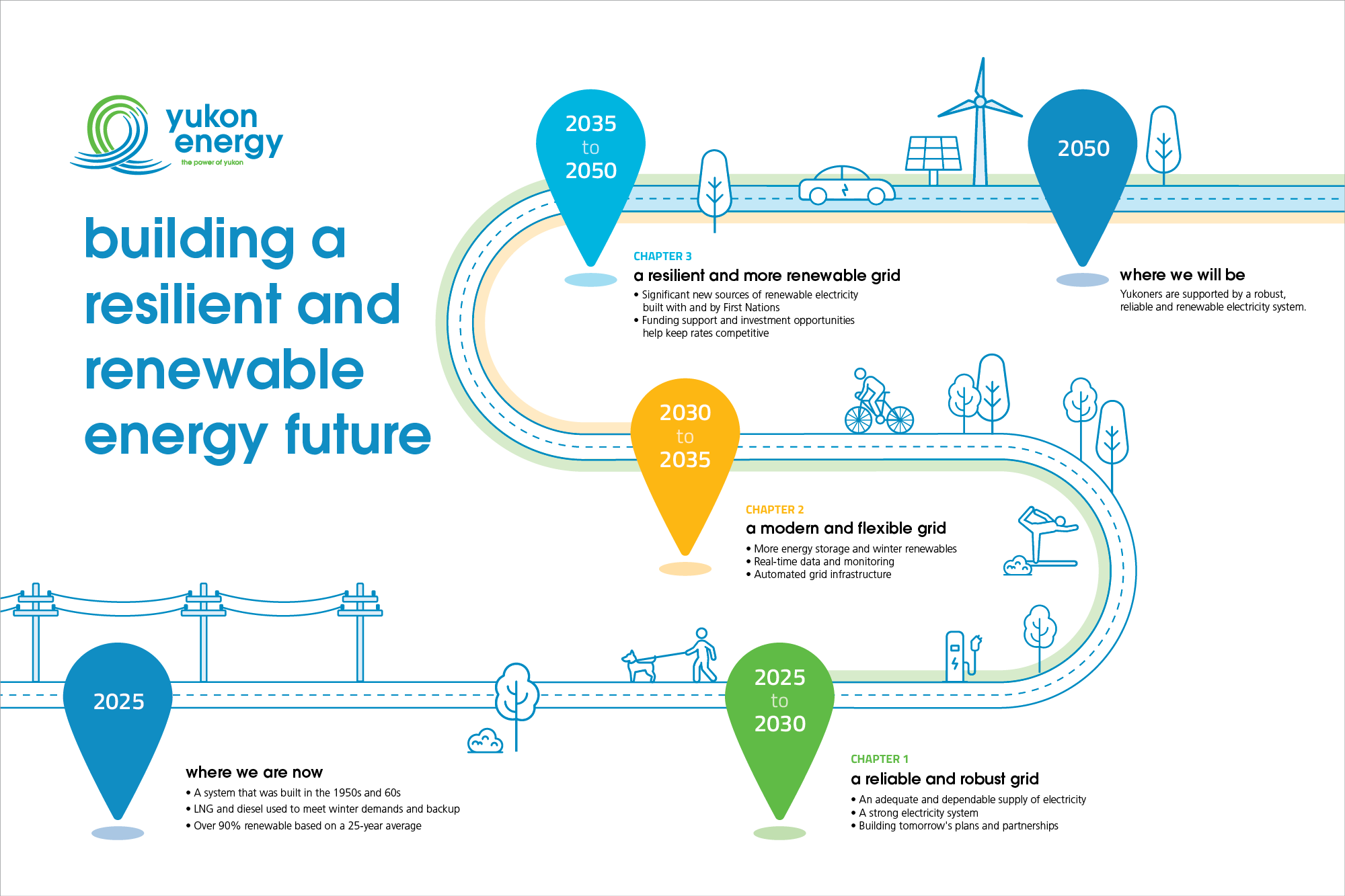Electricity Planning
AN ELECTRICITY SYSTEM WE CAN ALL COUNT ON
Demand for electricity in the Yukon is growing, and our aging, isolated grid must evolve to meet both current and future needs. Building a strong and resilient electricity system will require a clear vision and a staged approach.

Our vision for the future
BUILDING A RESILIENT AND RENEWABLE ENERGY FUTURE: YUKON ENERGY’S ROAD MAP TO 2050
Yukon Energy’s Road Map to 2050 outlines our long-term vision for creating a more resilient and renewable electricity grid. This road map serves as a framework to deliver reliable power to Yukoners for the next 25 years. The work we are undertaking will help chart the course for future large-scale renewable energy projects and emerging technologies, all aimed at supporting the Yukon’s continued growth.
See our road map to 2050.
Our plans for the short term
CHAPTER 1: A RELIABLE AND ROBUST GRID, 2025 TO 2030
Over the next five years, our focus will be on building a reliable, robust electricity system – one that meets the demands of every season. Key actions in this phase include infrastructure renewal, increasing winter capacity, and strengthening the transmission and distribution system. These short-term actions are crucial for laying the groundwork for a more renewable energy future. We need a strong foundation to set us up for a modern, adaptable grid capable of safely integrating the next generation of intermittent renewable energy sources.*
Read our five-year strategic plan.
* In Chapter 1, we shared that a single-dwelling home requires three times more electricity when it switches from propane or diesel to electric heat. And when you add an electric vehicle (EV) to the mix, that same home could use five to six times more electricity. To clarify, these numbers are based on demand, not energy consumption. That means it’s not about how much electricity a home uses over time, but how much it might need at a single point in time. Find the full explanation here.